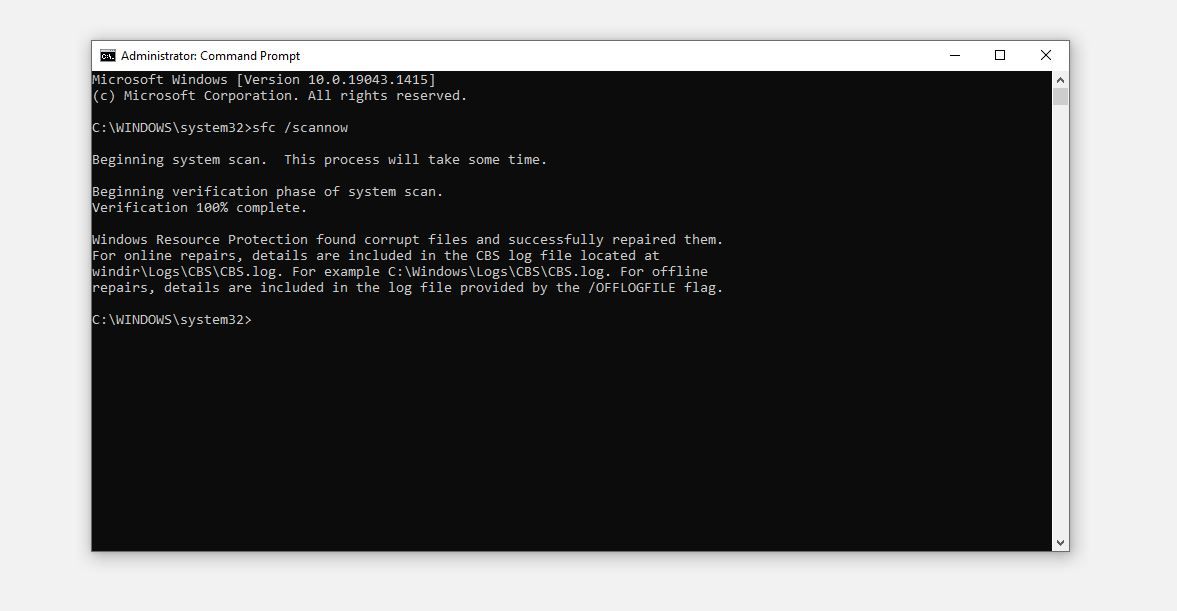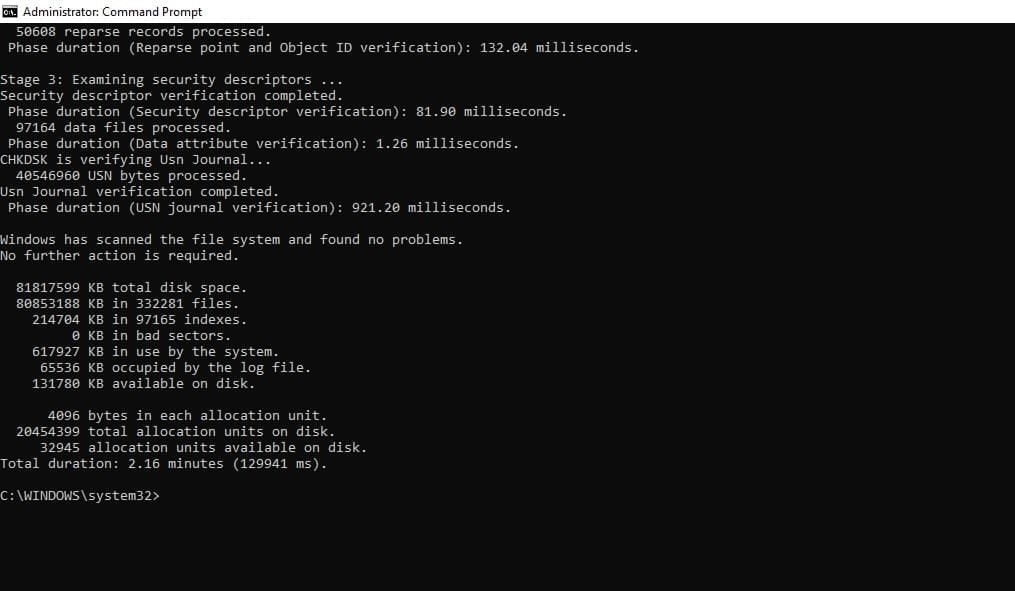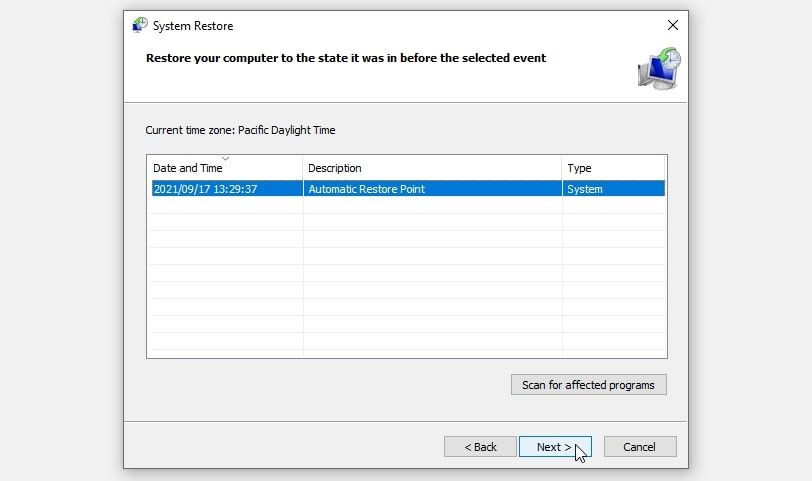The somewhat cryptic “Windows detected a hard disk problem” error is pretty common amongst Windows users. Although the error does not specify what the problem is, the error window itself says you should contact the manufacturer for a possible repair or replacement.
While it may sound bad, it’s not always a huge issue, since software issues can also cause the problem. So, before you make up your mind to visit your manufacturer, you should always troubleshoot the software issues first. We’ve compiled a list of fixes that you can try to rule out software problems.
But First, Back Up Your Files
The process of troubleshooting storage devices can be risky. At any time, anything could go wrong, and your precious data could disappear without a trace. To avoid this risk, consider backing up all your files and documents.
You can backup your whole computer on an external storage device, subscribe to a backup service, or transfer your data to the cloud.
Unless you have a lot of data that requires premium cloud storage space, you won’t have to pay for the cloud backup, so we recommend you backup your Windows computer to the cloud.
After the backup is created, you can begin troubleshooting with peace of mind.
1. Uninstall Recently Installed Apps and Programs
Your computer may behave abnormally due to the presence of third-party apps and software. It is more likely to occur when you download them from an unknown source.
Thus, before you move on to operating system level troubleshooting, delete all recently installed apps and programs. You can start with the latest ones, after which you started experiencing this error.
If putting those apps in the recycle bin won’t help and the error persists, thoroughly troubleshoot the issue.
2. Run an SFC Scan
SFC scan is a godsend feature that Windows offers to scan and fix corrupted OS files. Hence, that is the next scan you should run to rule out corrupt files as a cause of this issue.
To run an SFC scan, follow the below steps:
- Type “cmd” in the Windows search bar.
- Right-click on the Windows Command Prompt app and select Run as administrator.
- Type “SFC /scannow” and hit Enter.
Once the scan is done, it will either notify you that it identified and fixed some issues or tell you to do it yourself. Follow the instructions the scan gives you on the screen, and you should be good to go.
In the unlikely event that the scan fails, perform a CHKDSK check.
3. Run a CHKDSK Check
A feature similar to SFC, CHKDSK, fixes the file system errors and problems on your hard drive. Of all the fixes covered in this article, this fix has the highest chance of fixing the error. To run the check properly, you will need to run three separate commands in the Command Prompt.
You can start by typing “cmd” in the Windows search bar. Then, right-click the Windows Command Prompt app and choose Run as administrator.
Then, type “CHKDSK” and hit Enter to start the process to identify possible issues. Remember that this command won’t fix any problems with your hard drive, but it will only let you know if they exist.
If the CHKDSK produces clean results, you can move on to the next step. If it finds problems with your hard drive, run the following two commands in the Command Prompt the same way you did earlier.
- chkdsk /f: This command runs a deep check and fixes any errors it finds along the way.
- chkdsk /r: This command attempts to resolve any bad sectors that might be the root cause of the error being discussed.
If none of the three checks succeed, continue implementing the fixes below.
4. Run a Malware Scan
Viruses hidden on a computer could also be the reason why Windows is reporting the hard disk error. Therefore, the next step should be to run a malware scan and eliminate the possibility of hidden malware causing harm.
You can run a scan with a reliable antivirus to remove the malware. If you do not have an antivirus installed, there are other ways to scan for viruses without requiring antivirus software.
5. Restore System to a Restore Point
Restoring Windows to a restore point is an excellent way to solve problems that can’t be fixed by traditional means. Since it restores your entire system, it also reverts all settings. Thus, it removes the possibility of changes in settings that might be resulting in such an issue.
To go back to a restore point, follow the below steps:
- Search for “Create a Restore Point” in the Windows search bar.
- Navigate to the System Protection tab under System Properties.
- Click the System Restore button.
- Choose the restore point you want to go back to and click Next.
After that, follow the on-screen instructions to get your computer back to a healthy state.
Once you restore your computer, check if the error is still present. If you answer yes, it’s most likely a hardware problem, and OS is not at fault.
6. Rule Out Hardware Issues
To confirm that the hardware issue is causing the error, you’ll need to dig deep. So, roll up your sleeves, unplug your hard drive from your computer and connect it to another computer to see if you get the same error. If the other computer also starts to show the same error, that confirms that you need to replace the hard disk.
You should also watch for signs suggesting your hard drive might fail soon. Some of these signs include the computer being slow or freezing, bad sectors recurring more frequently, and strange sounds coming from your hard drive.
If you are encountering such a sign and an error under discussion, it would be wise to have your computer or laptop checked by a technician if you don’t want to deal with it personally.
Get Rid of the “Windows Detected a Hard Disk Problem” Error for Good
Hopefully, the fixes in the list will help identify and fix the software issues if they are responsible. If none of the fixes work, follow the error window instructions and contact your manufacturer.
Additionally, if you decide to purchase a new hard drive, compare different models according to various factors to pick the best fit. Choose the right type, size, specifications, performance, and most importantly, strike the right balance between price and features.
Read Next
About The Author









More Stories
Indulge in Luxury: High-End Women’s Cardigans Worth It
History of the Computer – Cooling, Part 1 of 2
The Importance of Video and Computer Games